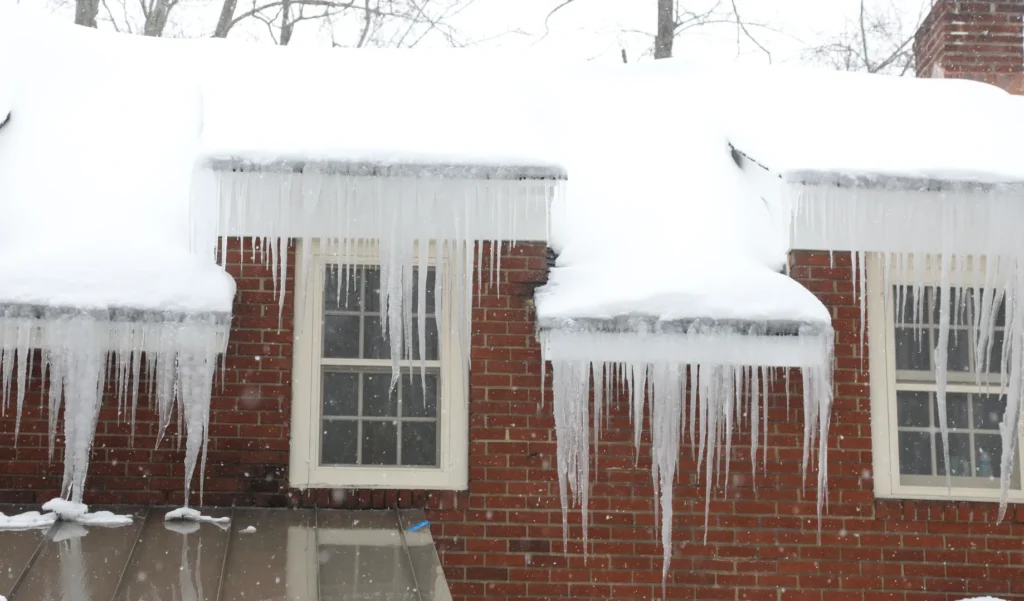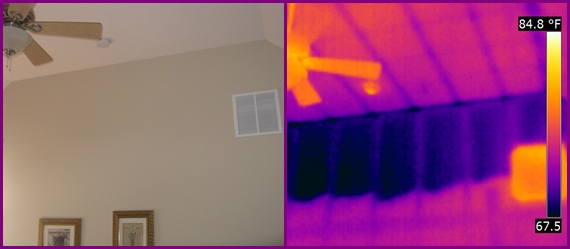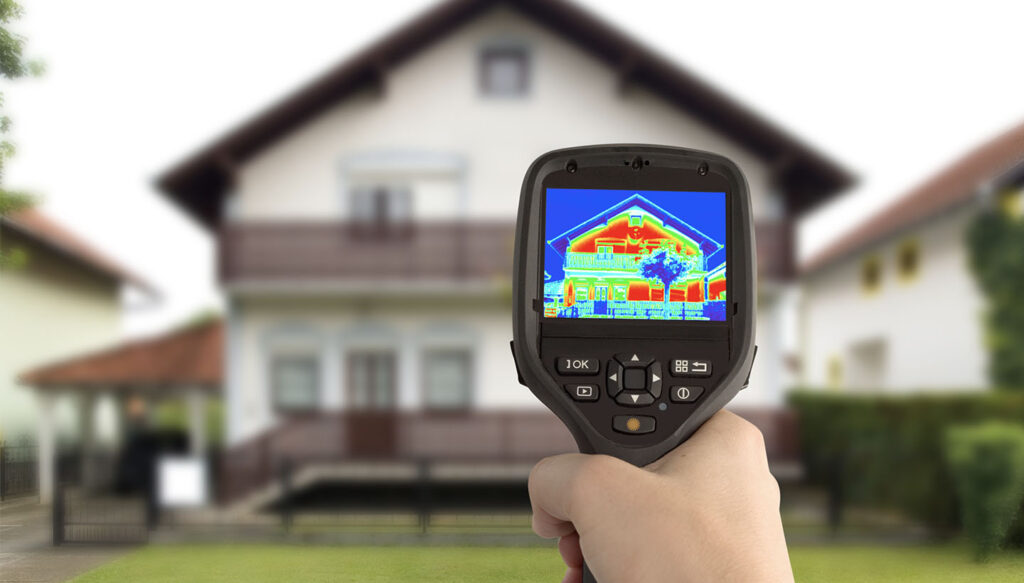Winter in New Jersey isn’t just about snow and ice. It’s about drafty rooms, rising heating bills, and the worry that something hidden, like a slow leak or a failing furnace that could turn into a big problem when the temperature drops. Many homeowners don’t realize how much energy (and money) they lose every winter, or how small issues can become emergencies in the coldest months.
Thermal imaging is a tool that can change all of that. With a single scan, you can see exactly where your home is losing heat, where moisture is hiding, and where your systems might be failing. It’s the difference between guessing and knowing and it can save you a lot of trouble before winter even begins.
Winter Exposes Every Weakness in Your Home
New Jersey winters are unpredictable. One week it’s mild, the next you’re facing a nor’easter. That kind of weather puts every part of your home to the test.
- Drafts sneak in through old windows and doors.
- Insulation settles or shifts, leaving cold spots in walls and ceilings.
- Heating systems work overtime, sometimes hiding problems until they break down.
- Moisture from melting snow or rain can seep into attics and basements, leading to mold or rot.
Most of these issues are invisible—until you get the first high heating bill or find water damage in the spring.

The Real Cost of Ignoring Hidden Winter Problems
Ignoring these hidden issues can cost you in more ways than one:
- Sky-high utility bills from heat escaping through gaps and poor insulation.
- Uncomfortable rooms that never seem to get warm, no matter how high you turn up the thermostat.
- Frozen pipes in uninsulated walls or crawl spaces, leading to expensive repairs.
- Mold growth from undetected leaks or condensation, which can affect your family’s health.
- Emergency HVAC repairs in the middle of a cold snap, when service calls are most expensive.
Every winter, homeowners across New Jersey face these problems. Most could have been prevented with a little foresight.

How Thermal Imaging Finds Problems Before Winter Hits
Thermal imaging uses infrared cameras to “see” temperature differences in your home. These cameras create a color map of your walls, ceilings, floors, and even your roof, showing exactly where heat is escaping or cold air is sneaking in.
Here’s what a pre-winter thermal scan can reveal:
- Insulation Gaps: Dark blue or purple areas on a thermal image show where insulation is missing or has settled. These are the spots where your home is losing the most heat.
- Drafty Windows and Doors: Bright streaks around frames mean air is leaking in or out. Sealing these can make a huge difference in comfort and cost.
- Hidden Moisture: Cold spots in ceilings or walls can indicate water intrusion from ice dams, roof leaks, or condensation. Catching this early prevents mold and structural damage.
- HVAC Issues: Uneven heating patterns can point to blocked vents, failing ductwork, or a furnace that’s not distributing heat evenly.
- Frozen Pipe Risks: Cold spots in exterior walls or crawl spaces can show where pipes are at risk of freezing.

Why a Thermal Imaging Scan Pays Off Before Winter
1. Lower Heating Bills
Sealing leaks and adding insulation where it’s needed can cut your energy costs by 10–30%. That’s money back in your pocket every month.
2. A More Comfortable Home
No more cold bedrooms or drafty living rooms. A thermal scan helps you target the exact spots that need attention.
3. Prevent Expensive Repairs
Finding moisture or HVAC issues before they become emergencies saves you from costly repairs in the dead of winter.
4. Protect Your Health
Moisture problems can lead to mold, which is a health risk—especially in tightly sealed winter homes. Early detection means safer air for your family. [link this word: Mold Inspections]
5. Peace of Mind
Knowing your home is ready for whatever winter brings lets you relax and enjoy the season.
What to Expect During a Thermal Imaging Inspection
A thermal imaging inspection is quick, non-invasive, and incredibly informative. Here’s how it works:
- An inspector walks through your home with a handheld infrared camera.
- They scan walls, ceilings, floors, windows, doors, and even the attic and basement.
- The camera instantly shows temperature differences, highlighting problem areas.
- You get a detailed report with annotated images, showing exactly where improvements are needed.

- Schedule your inspection in the fall, before the first cold snap. This gives you time to make repairs or upgrades.
- Pair your scan with an energy audit for a complete picture of your home’s efficiency. [link this word: Fuel Tank Surveys]
- Use the report to prioritize improvements. Start with the biggest sources of heat loss or moisture.
- Check your HVAC system for even heating and airflow. If the scan shows uneven temperatures, have your system serviced.
- Don’t forget the attic and basement. These are common sources of heat loss and moisture problems.
Get Ahead of Winter And Save
Winter in New Jersey can be tough on homes, but it doesn’t have to be tough on you. A thermal imaging inspection gives you the knowledge to fix small problems before they become big ones. Lower bills, fewer surprises, and a warmer, healthier home all with one simple scan.
Don’t wait for the first freeze. Schedule your thermal imaging inspection with 5D Home Inspections now and head into winter with confidence.